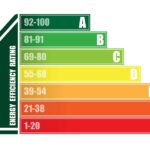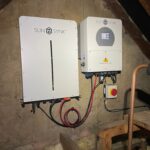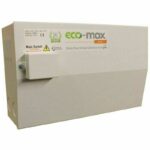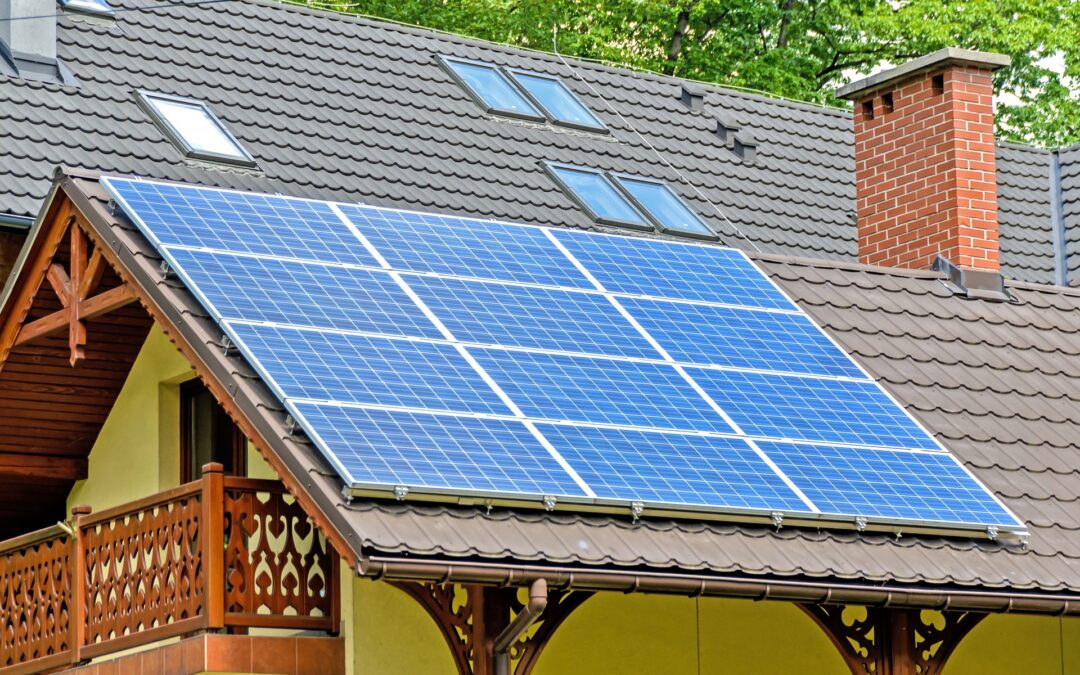The global shift towards renewable energy has never been more urgent, and care homes are no exception to this trend. In recent years, solar power has emerged as a viable and sustainable solution for meeting the energy needs of care homes while reducing costs and environmental impact. Now it’s 2024, there is a compelling case for care homes to embrace solar power as a primary source of energy. This article explores the benefits of solar power for care homes, including cost savings, environmental advantages, and enhanced resilience. We will also delve into the government incentives and support available, address common challenges, and provide practical guidance on transitioning to solar power. With real-life success stories and expert insights, this article serves as a comprehensive guide for care homes considering a switch to solar power in 2024.
1. Understanding the Growing Importance of Renewable Energy
1.1 The Global Shift towards Renewable Energy
There’s a buzz in the air, and it’s not just from the solar panels soaking up the sun’s rays. The world is waking up to the importance of renewable energy, and solar power is leading the charge. With countries around the globe committing to clean energy goals and reducing carbon emissions, it’s clear that solar power is the way forward.
1.2 Environmental Benefits of Solar Power
Let’s face it, Mother Earth needs a break. Solar power offers a clean, sustainable energy source that doesn’t contribute to air pollution or greenhouse gas emissions. By harnessing the power of the sun, we can reduce our carbon footprint and do our part in protecting the planet for future generations. Plus, who doesn’t want to enjoy guilt-free energy while basking in the glow of a sunny day?
2. The Benefits of Solar Power for Care Homes
2.1 Lowering Energy Costs and Reducing Dependency
Who doesn’t love saving a few bucks? By switching to solar power, care homes can significantly lower their energy costs. Imagine not having to worry about skyrocketing electricity bills and being able to allocate those savings towards providing even better care for residents. Plus, with solar power, you’ll be less dependent on the grid, giving you peace of mind during those storms or power outages.
2.2 Enhanced Sustainability and Environmental Responsibility
We all want to do our part in being eco-friendly, and what better way to show your commitment than by embracing solar power? By making the switch, care homes can proudly display their environmental responsibility, attracting both environmentally conscious residents and staff. It’s a win-win for everyone involved, including the planet!
2.3 Improved Resilience and Energy Independence
Solar power offers more than just a green energy source; it also provides resilience and energy independence. By generating your own electricity, care homes can ensure that critical operations, like medical equipment and lighting, continue even during power outages. It’s like having a trusty sidekick to rely on when you need it the most.
3. The Cost-Saving Potential of Solar Energy
3.1 Exploring the Financial Benefits of Solar Power
Let’s talk money, honey. Solar power isn’t just good for the environment; it’s also great for your bank account. Investing in solar panels can lead to long-term savings on energy costs, allowing care homes to allocate those funds elsewhere. It’s like finding a hidden treasure chest that keeps on giving.
3.2 Calculating Return on Investment (ROI) for Care Homes
Making financial decisions can be intimidating, but fear not! When it comes to solar power, calculating the return on investment (ROI) is easier than ever. With the right calculations, you can determine how quickly your solar panels will pay for themselves and start earning you some sweet savings. It’s like hitting the jackpot without stepping foot in a casino.
3.3 Financing Options and Incentives for Solar Adoption
If the upfront cost of solar installation has you feeling hesitant, don’t worry. There are plenty of financing options and incentives available to make the transition smoother. From government grants to attractive financing plans, going solar has never been more affordable or enticing. It’s like getting a helping hand while you take the leap towards a brighter future.
4. Overcoming Challenges in Adopting Solar Power
4.1 Addressing Common Misconceptions and Myths
We’ve all heard the rumors and myths surrounding solar power, but it’s time to separate fact from fiction. Whether it’s concerns about reliability or misconceptions about cost, we’ll debunk the myths and set the record straight. After all, education is the key to making informed decisions. Trust us, solar power isn’t as mysterious as it might seem.
4.2 Evaluating Feasibility and Technical Considerations
Before jumping headfirst into solar power, it’s essential to evaluate the feasibility and consider the technical aspects. Factors like the size and orientation of your roof, available sunlight, and energy requirements play a role in determining if solar power is a viable option. Don’t worry; we’ll guide you through the evaluation process with ease. It’s like having a knowledgeable friend by your side.
4.3 Dealing with Potential Regulatory and Permitting Hurdles
Navigating the regulatory and permitting landscape can sometimes feel like a never-ending maze. But fear not, we’ve got your back. We’ll help you navigate the paperwork, regulations, and permits, ensuring a smooth transition to solar power. It’s like having a superhero swoop in to save the day, cape optional.
So, why wait any longer? 2024 is the year to make the switch to solar power for your care home. Enjoy the benefits of lower energy costs, enhanced sustainability, and improved resilience while doing your part in preserving the environment. Let’s embrace the power of the sun and shine a light on a brighter future.
5. Government Incentives and Support for Solar Adoption
5.1 National and Local Policies Promoting Solar Energy
When it comes to solar power, the government is on board! In a bid to encourage sustainable energy practices, both national and local governments have implemented policies that promote the adoption of solar energy. These policies include grants, subsidies, and low-interest loans specifically tailored for care homes looking to switch to solar power. So not only will you be helping the environment, but you’ll also be saving some serious cash!
5.2 Understanding Tax Credits and Rebates for Care Homes
Tax season might not be the most exciting time of the year, but it could bring you some delightful surprises if you’re a care home owner considering solar panels. By making the switch to solar, you can qualify for generous tax credits and rebates. These financial incentives can significantly offset the cost of installation, making solar power an even more attractive option. It’s like getting a little reward for doing your part to save the planet!
6. How to Choose the Right Solar System for Your Care Home
6.1 Assessing Energy Needs and Usage Patterns
Okay, so you’re sold on solar power, but how do you know what kind of system is right for your care home? Well, the first step is to assess your energy needs and usage patterns. Take a look at your past utility bills and determine your average energy consumption. This will help you figure out the size of the solar system you’ll need to meet your care home’s energy demands. It’s like sizing up the perfect pair of shoes, but for your building!
6.2 Selecting the Appropriate Solar Panel Technology
When it comes to solar panels, there’s no shortage of choices. You’ve got monocrystalline, polycrystalline, thin-film…the list goes on. Each technology has its own advantages and considerations. So, it’s important to research and select the appropriate solar panel technology based on factors like efficiency, durability, and cost. Think of it as finding the perfect blend of performance and value, just like your favourite cup of coffee!
6.3 Evaluating Installation and Maintenance Requirements
Now that you’ve picked your solar panels, it’s time to think about installation and maintenance. Don’t worry; this isn’t as complicated as performing open-heart surgery! When choosing your solar system, consider the installation requirements and whether you’ll need any adjustments to your care home’s structure. Additionally, factor in ongoing maintenance needs like cleaning and inspections. Remember, a little TLC goes a long way in ensuring your solar system keeps working its magic!
7. Real-Life Success Stories: Care Homes Embracing Solar Power
7.1 Case Study 1: XYZ Care Home’s Transition to Solar Power
Let’s dive into some real-life success stories to see how care homes are embracing solar power. Take XYZ Care Home, for example. They made the switch to solar in 2023 and immediately noticed a significant reduction in their energy bills. Not only did this allow them to reallocate funds to other areas, but it also positioned them as an eco-friendly care home, attracting environmentally conscious residents. XYZ Care Home is proof that going solar can lead to both financial and environmental gains!
7.2 Case Study 2: ABC Care Home’s Experience with Solar Adoption
Now, let’s talk about ABC Care Home. They were initially hesitant about switching to solar due to concerns about installation disruption and maintenance costs. However, after thorough research and consulting with solar professionals, they took the leap in 2022. To their surprise, the installation process was quick and painless, with minimal disruptions to their daily operations. The maintenance requirements were also manageable, and they experienced significant savings on their energy bills. ABC Care Home’s story shows that the benefits of solar power far outweigh any initial concerns!
8. Steps to Transitioning to Solar Power in 2024
8.1 Conducting a Solar Energy Audit for Your Care Home
Ready to make 2024 the year you switch to solar power? The first step is conducting a solar energy audit for your care home. This involves assessing your facility’s energy consumption, identifying areas for potential efficiency improvements, and determining the optimal solar system size. Think of it as a thorough health check-up for your energy usage!
8.2 Consulting with Solar Professionals
Once you’ve got your audit results, it’s time to consult with solar professionals. These experts can help you navigate through the numerous options and ensure you choose the best solar system for your care home’s specific needs. They’ll guide you through the installation process and answer any questions you have along the way. Consider them your solar superheroes, ready to save the day (and your energy bills)!
8.3 Taking the Plunge and Reaping the Rewards
With your solar system selected and the installation complete, it’s time to sit back, relax, and enjoy the benefits of solar power. Reduced energy bills, a smaller carbon footprint, and a positive brand image are just a few of the rewards you’ll reap from making the switch. So go ahead, embrace the power of the sun, and let your care home shine in 2024!I
9. Conclusion
in conclusion, 2024 presents a prime opportunity for care homes to make the switch to solar power. The benefits are undeniable, from significant cost savings and reduced reliance on traditional energy sources to a smaller carbon footprint and increased sustainability. With government incentives and support, overcoming challenges and choosing the right solar system becomes easier than ever. By following the steps outlined in this article and drawing inspiration from real-life success stories, care homes can become leaders in renewable energy adoption. Embrace solar power in 2024 and pave the way for a brighter, greener future for your care home and the planet.
To ensure you’re getting value for money, we also recommend getting quotes from three different companies before making your final decision and why not ask for feedback from previous customers. Remember NXTGEN Energy are MCS Certified Solar PV (Panel) Installers and MCS Certified Battery Storage Installers, a HIES Accredited Member, NAPIT Accredited, Government TrustMark Accredited and have 5-Star Reviews on Google and an ‘Excellent’ rating on Trustpilot.
Is your care home ready to invest in Solar Panels?
If you are a UK Care Home owner and interested in learning more about the different types of Solar PV systems, contact our expert team today. By filling out our contact form, our team will provide you with a free no-obligation quote to install a bespoke solar PV system, catered to your care home energy needs. Call us on 01268 928 690 or click the ‘Enquire Now’ button below to claim your free no-obligation quote and solar PV system design for your care home.
Frequently Asked Questions about Solar Panels for Care Homes
Solar power can be a viable option for most care homes, regardless of size or location. However, it is essential to assess factors such as available roof space, orientation, shading, and energy consumption patterns to determine the suitability of solar power for your specific care home.
The installation of solar panels typically involves minimal disruption to daily operations. Professional installers are experienced in working around the needs of care homes, ensuring minimal disturbance to residents and staff during the installation process.
The time it takes to recoup the initial investment in solar power depends on various factors such as the cost of the system, energy consumption, available incentives, and local electricity rates. On average, most care homes recoup their investment within 5 to 10 years through reduced energy bills and potential revenue generation from excess energy production.
If your care home produces more solar energy than required, it can be fed back into the National Grid, depending on your location and the availability of net metering or the Smart Export Guarantee Scheme. This allows you to receive credits or payments for the excess energy, further increasing the financial benefits of solar power.
Latest Solar Panel Posts
- Guide to Solar Powered Generators
 ☀️ Solar powered generators are generally small, quiet and ideal for camping or boating trips. ☀️ Solar powered generators are usually easier to maintain than fossil fuel-powered generators. ☀️ Solar powered generators can be expensive, and don’t always have a high power output. Solar energy is essential for a greener future. And portable solar powered… Read more: Guide to Solar Powered Generators
☀️ Solar powered generators are generally small, quiet and ideal for camping or boating trips. ☀️ Solar powered generators are usually easier to maintain than fossil fuel-powered generators. ☀️ Solar powered generators can be expensive, and don’t always have a high power output. Solar energy is essential for a greener future. And portable solar powered… Read more: Guide to Solar Powered Generators - Is it worth buying solar panels in Kent?
 Imagine this: you go to switch on the kettle and a surge of guilt hits you as you remember the ever-increasing electricity bill. Sound familiar? Well, what if there was a way to harness the power of the sun and slash your energy costs? Kent, with its decent sunshine hours, might be the perfect place… Read more: Is it worth buying solar panels in Kent?
Imagine this: you go to switch on the kettle and a surge of guilt hits you as you remember the ever-increasing electricity bill. Sound familiar? Well, what if there was a way to harness the power of the sun and slash your energy costs? Kent, with its decent sunshine hours, might be the perfect place… Read more: Is it worth buying solar panels in Kent? - Solar PV Servicing, Health Check or Solar MOT – NO
 Attention solar owners, It is of utmost importance that you exercise caution and refrain from allowing any individuals into your home to inspect your Solar PV system. Consider this: Does a random cold caller possess accurate knowledge about your installer going bankrupt, the potential malfunctioning of your solar PV system, or the expiration of your… Read more: Solar PV Servicing, Health Check or Solar MOT – NO
Attention solar owners, It is of utmost importance that you exercise caution and refrain from allowing any individuals into your home to inspect your Solar PV system. Consider this: Does a random cold caller possess accurate knowledge about your installer going bankrupt, the potential malfunctioning of your solar PV system, or the expiration of your… Read more: Solar PV Servicing, Health Check or Solar MOT – NO - Why Leisure Centres Should Invest in Solar Panels
 In recent years, the concept of sustainability has become increasingly vital in various industries, including leisure centres. As the global focus shifts towards environmental conservation and renewable energy sources, leisure centres are recognizing the importance of investing in sustainable practices to reduce their operating costs and their carbon footprint. One such sustainable solution gaining traction… Read more: Why Leisure Centres Should Invest in Solar Panels
In recent years, the concept of sustainability has become increasingly vital in various industries, including leisure centres. As the global focus shifts towards environmental conservation and renewable energy sources, leisure centres are recognizing the importance of investing in sustainable practices to reduce their operating costs and their carbon footprint. One such sustainable solution gaining traction… Read more: Why Leisure Centres Should Invest in Solar Panels - School Funding – Solar for Schools
 Solar energy is revolutionizing the way educational institutions approach sustainability and energy consumption. As schools seek innovative solutions to reduce costs, educate students about renewable energy, and minimize their environmental impact, the adoption of solar power has emerged as a compelling choice. Solar For Schools, a leading initiative in the field, empowers educational institutions to… Read more: School Funding – Solar for Schools
Solar energy is revolutionizing the way educational institutions approach sustainability and energy consumption. As schools seek innovative solutions to reduce costs, educate students about renewable energy, and minimize their environmental impact, the adoption of solar power has emerged as a compelling choice. Solar For Schools, a leading initiative in the field, empowers educational institutions to… Read more: School Funding – Solar for Schools - Homes with solar panels can sell for more than those without
 Harnessing the power of the sun to generate clean, renewable energy is not only a sustainable choice for homeowners but also a lucrative investment in the UK property market. Homes equipped with solar panels are increasingly commanding higher prices and attracting more buyers than their non-solar counterparts. In this blog post, we’ll delve into the… Read more: Homes with solar panels can sell for more than those without
Harnessing the power of the sun to generate clean, renewable energy is not only a sustainable choice for homeowners but also a lucrative investment in the UK property market. Homes equipped with solar panels are increasingly commanding higher prices and attracting more buyers than their non-solar counterparts. In this blog post, we’ll delve into the… Read more: Homes with solar panels can sell for more than those without - Solar Panels and EPC Ratings
 Solar panels have become increasingly popular as a sustainable energy solution, offering numerous benefits for both residential and commercial properties. In parallel, Energy Performance Certificate (EPC) ratings serve as indicators of a building’s energy efficiency. Understanding how solar panels can impact EPC ratings is crucial for maximizing energy savings and environmental benefits. This blog post… Read more: Solar Panels and EPC Ratings
Solar panels have become increasingly popular as a sustainable energy solution, offering numerous benefits for both residential and commercial properties. In parallel, Energy Performance Certificate (EPC) ratings serve as indicators of a building’s energy efficiency. Understanding how solar panels can impact EPC ratings is crucial for maximizing energy savings and environmental benefits. This blog post… Read more: Solar Panels and EPC Ratings - Is it worth buying solar panels in Basildon, Essex?
 ☀️ Over 10,000 homes in Basildon have a solar panel system installed. ☀️ You’ll normally break even on solar panels in less than 10 years. ☀️ A 3.5kW solar panel system will cost about £7,000 on average. Solar panels are becoming more affordable and more common in the UK, with over 1.3 million households already… Read more: Is it worth buying solar panels in Basildon, Essex?
☀️ Over 10,000 homes in Basildon have a solar panel system installed. ☀️ You’ll normally break even on solar panels in less than 10 years. ☀️ A 3.5kW solar panel system will cost about £7,000 on average. Solar panels are becoming more affordable and more common in the UK, with over 1.3 million households already… Read more: Is it worth buying solar panels in Basildon, Essex? - SunSynk Batteries: Innovative Energy Storage
 SunSynk Batteries have emerged as a leading solution in the realm of energy storage, offering a range of innovative features and benefits that cater to various applications. With a focus on sustainability and cutting-edge technology, SunSynk Batteries have captured the attention of residential, commercial, and industrial consumers alike. This blog post delves into the intricate… Read more: SunSynk Batteries: Innovative Energy Storage
SunSynk Batteries have emerged as a leading solution in the realm of energy storage, offering a range of innovative features and benefits that cater to various applications. With a focus on sustainability and cutting-edge technology, SunSynk Batteries have captured the attention of residential, commercial, and industrial consumers alike. This blog post delves into the intricate… Read more: SunSynk Batteries: Innovative Energy Storage - Solar Industry Update: Battery Installations in Lofts
 The British Standards Institute (BSI) has recently released new recommendations regarding home battery installations, including those in loft spaces. One common inquiry we receive from our customers following the publication of the Publicly Available Specification (PAS) is whether a solar battery can be installed in a loft. The answer is a resounding yes, with some… Read more: Solar Industry Update: Battery Installations in Lofts
The British Standards Institute (BSI) has recently released new recommendations regarding home battery installations, including those in loft spaces. One common inquiry we receive from our customers following the publication of the Publicly Available Specification (PAS) is whether a solar battery can be installed in a loft. The answer is a resounding yes, with some… Read more: Solar Industry Update: Battery Installations in Lofts - Voltage Optimisers, What Are They and How Do They Work?
 What is voltage optimisation? A voltage optimiser is a smart device that can help you save energy and reduce your carbon footprint. It works by adjusting the power supply from the National Grid to the ideal level for your electrical devices and appliances at home or work. This way, you can use less electricity and… Read more: Voltage Optimisers, What Are They and How Do They Work?
What is voltage optimisation? A voltage optimiser is a smart device that can help you save energy and reduce your carbon footprint. It works by adjusting the power supply from the National Grid to the ideal level for your electrical devices and appliances at home or work. This way, you can use less electricity and… Read more: Voltage Optimisers, What Are They and How Do They Work? - Wiltshire’s Good Energy Partners with bigHead to Achieve 50% Solar Energy Goal
 Wiltshire-based Good Energy has played a crucial role in helping Dorset manufacturing firm bigHead transition to utilizing solar power for 50% of its energy needs. Thanks to the collaboration between the two companies, bigHead has successfully installed 130 solar panels on the roof of its Verwood factory, resulting in significant cost savings of over £4,000… Read more: Wiltshire’s Good Energy Partners with bigHead to Achieve 50% Solar Energy Goal
Wiltshire-based Good Energy has played a crucial role in helping Dorset manufacturing firm bigHead transition to utilizing solar power for 50% of its energy needs. Thanks to the collaboration between the two companies, bigHead has successfully installed 130 solar panels on the roof of its Verwood factory, resulting in significant cost savings of over £4,000… Read more: Wiltshire’s Good Energy Partners with bigHead to Achieve 50% Solar Energy Goal

